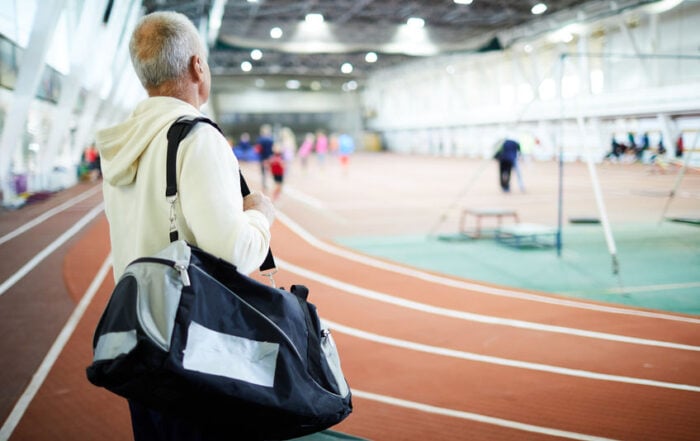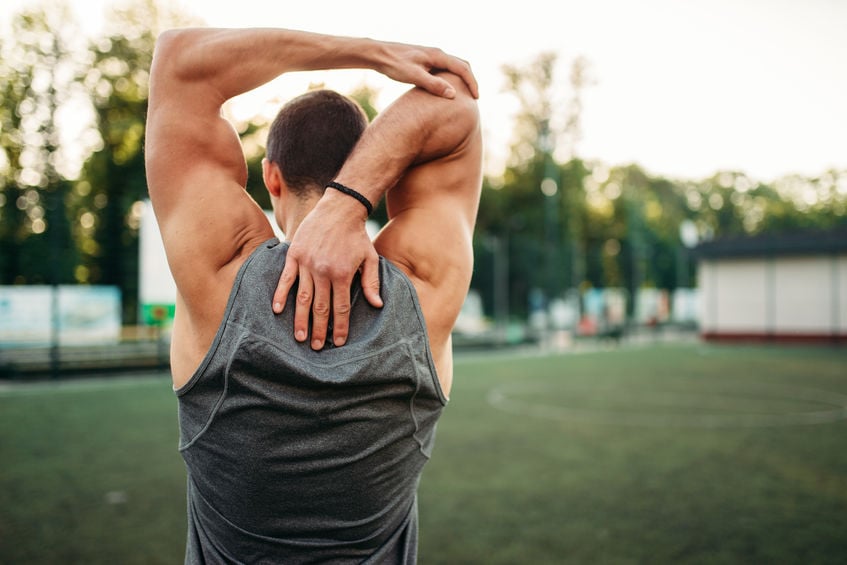Back Pain Is Not Going Anywhere
Back pain continues to be one of the most common conditions in the world today. About 80% of persons will have back issues at some point, and many more will need long-term treatment. While the back pain can be minor, some signs point to a herniated disc.

What’s a herniated disc anyway?
The spine is the most important network of bones in the body. Made up of 33 vertebrae, together, these bones support and connect most of the other bones in the body. More importantly, the spine protects the spinal cord, a narrow highway of tissue and nerves connected to the brain. Between most of the 33 bones are fibrous discs. The discs act as shock absorbers from the impact of everyday life. However, discs can degrade over time and slip out of place. Or an injury can cause disc damage. The discs slip out of place, placing pressure on surrounding nerves. This is a herniated disc. For many, deciphering between a herniated disc and a muscle strain can be difficult. Look for these 3 signs of a herniated disc.
1. Intense pain to the limbs
The pressure on the surrounding nerves sends pain signals to the brain. This, in turn, sends signals back to the area where the nerve works. For example, if the lower back has a herniated disc, the nerves running down the leg get affected. This is also known as sciatica. If the pain comes with some numbness or even weakness, a herniated disc may be the issue.
2. Simple tasks are a pain
For some persons with herniated discs, simple tasks bring about sharp pain when performed. Before, simple tasks like lifting a box or pushing a heavy door were easy. Now, lifting, pushing, or pulling brings a sharp, intense pain. Something as simple as sneezing or laughing can send a shock to the back. Pain with these tasks is not normal, and there could be a herniated disc causing havoc. Speak to a doctor as soon as possible.
3. You can’t lift a leg without pain
Persons with a lower herniated disc will have trouble raising one or both legs. This is actually a test a doctor will use to check for herniated discs. Lying down on a flat surface, legs straight, take the left leg slowly to the ceiling. Then try the right leg. If there is a discomfort to the point the person cannot raise the leg any further, a herniated disc may be the issue.
Treating discs the right way
In many cases, doctors treat herniated discs without surgery. Doctors usually turn to physical therapy, exercise, and medication. If those methods fail, an epidural steroid injection at the pain site can bring months of relief. In severe cases, especially with muscle weakness, doctors will turn to surgery to bring relief to the affected nerves.
Turning to surgery
Doctors can use one of several procedures to correct the damage. The decision is made based on the degree of damage and underlying spinal conditions. A microdiscectomy and a laminectomy are 2 common procedures used for herniated discs. A microdiscectomy is a minimally invasive surgery where the surgeon removes parts of the damaged disc. Using a small incision and microscopic tools, the surgeon cuts parts of the disc away, giving the nerves much-needed space. With a laminectomy, the doctor will instead remove part of the lamina. This is the arched part of the vertebra that acts as a plate. A laminectomy also gives the nerves some breathing room.
Don’t back down from herniated discs
Herniated discs are painful and can negatively affect the quality of life. Don’t ignore the warning signs. Speak to a doctor right away. Chances are, the issue could be corrected without surgery if caught early. If not, rest assured, procedures like a microdiscectomy or laminectomy can help. Both procedures are safe with a high success rate. Get back the feel-good feeling of a healthy back today.
Can Lower Back Pain Return After Spinal Surgery? 3 Lifestyle Changes To Get The Most Out Of Fusion
Minnesota Valley Valley Center2024-04-02T14:49:38-05:00April 15th, 2024|
Spinal surgery is an excellent solution for lower back pain, but symptoms can return. With lifestyle changes, patients can get the most out of fusion.
A New Lease On Life: Exploring How Robotic Total Joint Replacement Can Get You Active Again
Minnesota Valley Valley Center2024-03-24T17:38:47-05:00March 29th, 2024|
Robotic total joint replacement uses a robotic arm to replace the joint. This innovative approach allows a quick return to activities.
Restoring Dexterity: How Outpatient Carpal Tunnel Surgery Can Change Your Life
Minnesota Valley Valley Center2024-03-24T17:38:37-05:00March 15th, 2024|
After months of wrist and hand pain, carpal tunnel surgery may be needed. With outpatient options, restored dexterity with less pain and discomfort is possible.
More Articles from MVSC
April 15, 2024
Spinal surgery is an excellent solution for lower back pain, but symptoms can return. With lifestyle changes, patients can get the most out of fusion.
February 29, 2024
Rotator cuff tears can severely limit shoulder mobility. Surgery can relieve pain and improve mobility, allowing patients better reach.
January 15, 2024
Spinal conditions in the lower back may require a procedure called laminectomy. With MIS, patients have higher success rates.
December 21, 2023
Clavicle fractures are often treated non-surgically. The location and degree of damage can indicate whether collarbone surgery is needed.










